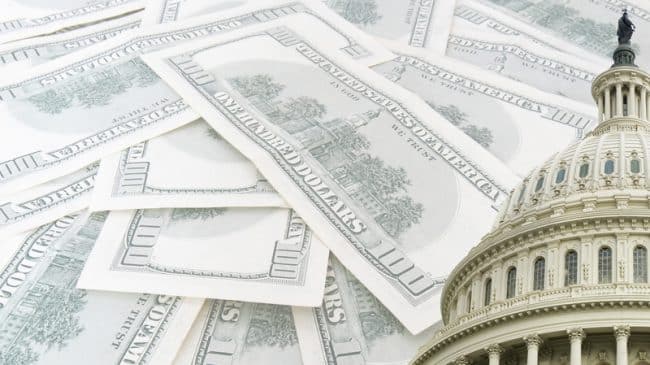>> Introduction
On February 17, 2009, President Barack Obama signed the $787 billion American Recovery and Reinvestment Act. The bill, known widely as “the stimulus,” is a combination of spending, loans, and tax cuts, and the centerpiece of the government’s plan to fight the economic recession.
The stimulus was hotly debated for weeks before making it to the president’s desk. In January, President Obama outlined for Congress what he wanted to see in the stimulus plan, but he left the details up to them. The first version of the bill was passed by the House of Representatives on January 29 by a vote of 244 to 188, and had a price tag of $819 billion. Then the Senate passed a different version of the stimulus on February 10, by a vote of 61 to 37, with $838 billion in spending.
Whenever the two houses of Congress pass different versions of the same bill, Democratic and Republican leaders appoint representatives to meet in a conference and come to a mutual agreement on the bill. The stimulus was no different. In the end, certain parts of the different versions got cut out, and new things were added, with a final bill approved by both the House and Senate costing an estimated $787 billion, plus interest. This money will be taken out of the U.S. treasury, which will have to borrow the money eventually pay it back with interest. The goal is to pay the loans back in 10 years so that the total cost winds up being around $1.14 trillion.
In the introduction to the American Recovery and Reinvestment Act, Congress says the purpose of the stimulus is:
- to preserve and create jobs and promote economic recovery;
- to assist those most impacted by the recession;
- to provide investments needed to increase economic efficiency by spurring technological advances in science and health;
- to invest in transportation, environmental protection, and infrastructure that will provide long-term economic benefits; and
- to stabilize state and local government budgets, in order to minimize and avoid reductions in essential services and counterproductive state and local tax increases.
To meet these goals there is $467.7 billion in direct spending on projects, $244 billion in tax cuts and tax credits, and $82.4 billion in estimated additional spending costs. Although this totals $794.1 billion, the difference is due to varied estimates on the costs of certain provisions.
Reason Foundation’s Taxpayer’s Guide to the Stimulus breaks down each section of the American Recovery and Reinvestment Act to explain just how all that money is being spent, who is spending it, and what the whole stimulus means in layman terms.
Back to Taxpayer’s Guide > Next: How to Read This Guide
The Taxpayer’s Guide was written by Anthony Randazzo. Special thanks to Carson Young and Ben Tonkin for research support.
